Numerical Simulation of the Rheological Behavior of Nanoparticulate Suspensions
Abstract
1. Introduction
2. State of the Art
3. Materials and Methods
4. Results and Discussion
4.1. Applicability and Limits of the Chosen Method
4.2. Derivation of Working Principles
5. Conclusions
Author Contributions
Funding
Acknowledgments
Conflicts of Interest
Abbreviations
| A | surface |
| a | distance between particle centers |
| b | distance between particle surfaces |
| c | fit parameter in Equation (16) |
| CFD | Computational Fluid Dynamics |
| corrected | |
| D | diffusion constant |
| DEM | Discrete Element Method |
| DPD | Dissipative Particle Dynamics |
| e | fit parameter in Equation (16) |
| experimental | |
| F | force |
| fluid | |
| H | Hamaker constant |
| h | Planck constant |
| Boltzmann constant | |
| m | fit parameter in Equation (16) |
| momentum flux tensor | |
| MD | Molecular Dynamics |
| n | refractive index |
| normalized | |
| Péclet number | |
| r | radius |
| simulated | |
| single particle | |
| T | temperature |
| V | volume |
| van der Waals | |
| W | potential |
| median particle size of a volume-weighted (3) particle size distribution |
| shear rate | |
| dielectric constant | |
| viscosity | |
| stress tensor | |
| stresslet | |
| main UV-absorption frequency | |
| shear stress |
Appendix A. Convergence Study on Required Size of the Simulation Domain
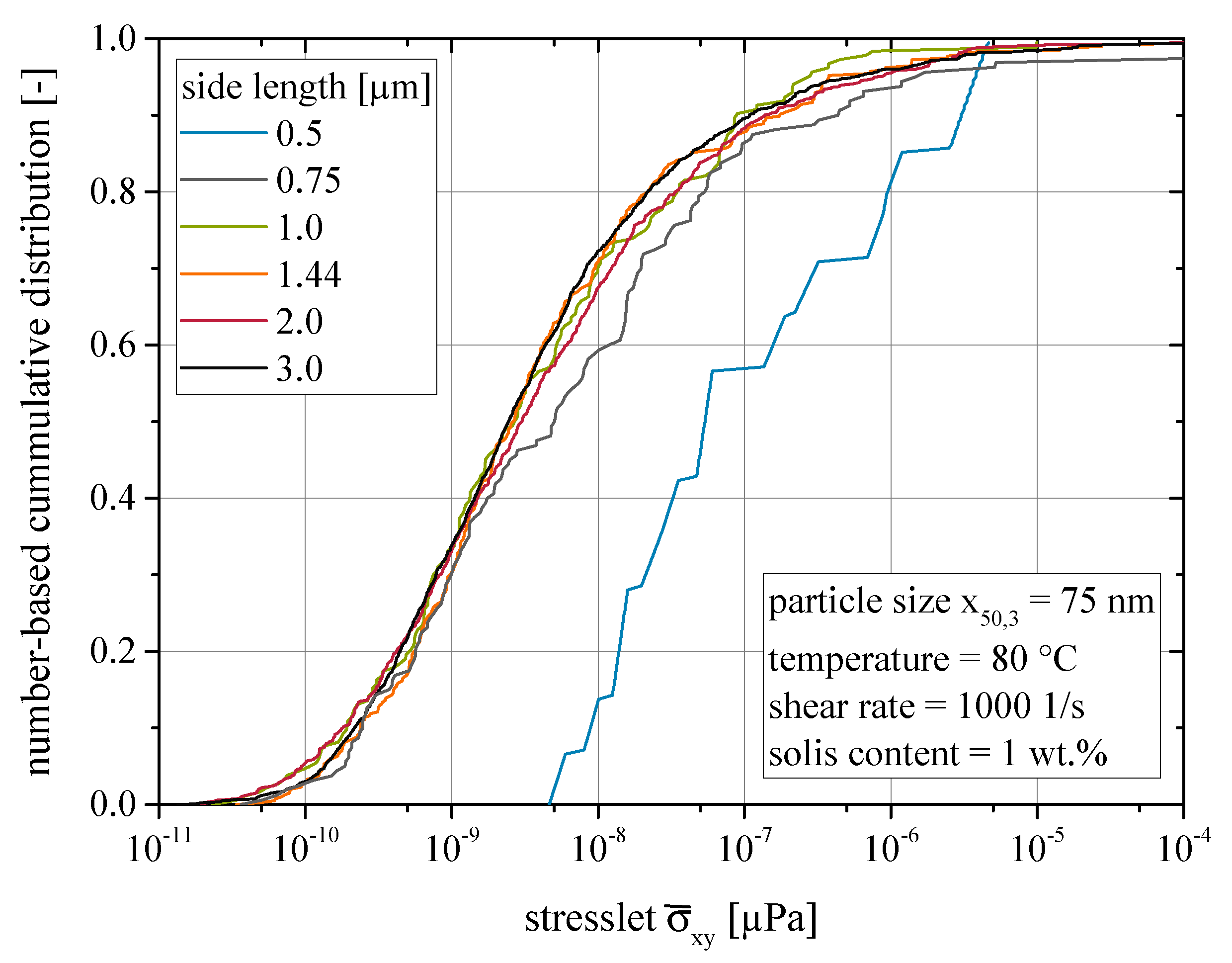
References
- Stickel, J.J.; Powell, R.L. Fluid Mechanics and Rheology of Dense Suspensions. Annu. Rev. Fluid Mech. 2005, 37, 129–149. [Google Scholar] [CrossRef]
- Russel, W.B. Review of the Role of Colloidal Forces in the Rheology of Suspensions. J. Rheol. 1980, 24, 287–317. [Google Scholar] [CrossRef]
- Dames, B.; Morrison, B.R.; Willenbacher, N. An empirical model predicting the viscosity of highly concentrated, bimodal dispersions with colloidal interactions. Rheol. Acta 2001, 40, 434–440. [Google Scholar] [CrossRef]
- Windhab, E.J. Fluid Immobilization—A Structure-Related Key Mechanism for the Viscous Flow Behavior of Concentrated Suspension Systems. Appl. Rheol. 2000, 10, 134–144. [Google Scholar] [CrossRef]
- Rutgers, I.R. Relative viscosity and concentration. Rheol. Acta 1962, 2, 305–348. [Google Scholar] [CrossRef]
- Mahbubul, I.M.; Saidur, R.; Amalina, M.A. Latest developments on the viscosity of nanofluids. Int. J. Heat Mass Transf. 2012, 55, 874–885. [Google Scholar] [CrossRef]
- Murshed, S.S.; Estellé, P. A state of the art review on viscosity of nanofluids. Renew. Sustain. Energy Rev. 2017, 76, 1134–1152. [Google Scholar] [CrossRef]
- Jux, M.; Finke, B.; Mahrholz, T.; Sinapius, M.; Kwade, A.; Schilde, C. Effects of Al(OH)O nanoparticle agglomerate size in epoxy resin on tension, bending, and fracture properties. J. Nanopart. Res. 2017, 19, 241. [Google Scholar] [CrossRef]
- Nolte, H.; Schilde, C.; Kwade, A. Production of Highly Loaded Nanocomposites by Dispersing Nanoparticles in Epoxy Resin. Chem. Eng. Technol. 2010, 33, 1447–1455. [Google Scholar] [CrossRef]
- Abliz, D.; Berg, D.C.; Ziegmann, G. Flow of quasi-spherical nanoparticles in liquid composite molding processes. Part II: Modeling and simulation. Compos. Part A Appl. Sci. Manuf. 2019, 125, 105562. [Google Scholar] [CrossRef]
- Abliz, D.; Finke, B.; Berg, D.C.; Schilde, C.; Ziegmann, G. Flow of quasi-spherical nanoparticles in liquid composite molding processes. Part I: Influence of particle size and fiber distance distribution. Compos. Part A Appl. Sci. Manuf. 2019, 125, 105563. [Google Scholar] [CrossRef]
- Bossis, G.; Brady, J.F. Dynamic simulation of sheared suspensions. I. General method. J. Chem. Phys. 1984, 80, 5141–5154. [Google Scholar] [CrossRef]
- Brady, J.F.; Bossis, G. The rheology of concentrated suspensions of spheres in simple shear flow by numerical simulation. J. Fluid Mech. 1985, 155, 105. [Google Scholar] [CrossRef]
- Doi, M.; Chen, D. Simulation of aggregating colloids in shear flow. J. Chem. Phys. 1989, 90, 5271–5279. [Google Scholar] [CrossRef]
- Brady, J.F. The rheological behavior of concentrated colloidal dispersions. J. Chem. Phys. 1993, 99, 567–581. [Google Scholar] [CrossRef]
- Yamamoto, S.; Matsuoka, T. Viscosity of dilute suspensions of rodlike particles: A numerical simulation method. J. Chem. Phys. 1994, 100, 3317–3324. [Google Scholar] [CrossRef]
- Woodcock, L.V. Origins of shear dilatancy and shear thickening phenomena. Chem. Phys. Lett. 1984, 111, 455–461. [Google Scholar] [CrossRef]
- Starr, F.W.; Douglas, J.F.; Glotzer, S.C. Origin of Particle Clustering in a Simulated Polymer Nanocomposite and Its Impact on Rheology. J. Chem. Phys. 2003, 119, 1777–1788. [Google Scholar] [CrossRef]
- Starr, F.W.; Schrøder, T.B.; Glotzer, S.C. Effects of a nanoscopic filler on the structure and dynamics of a simulated polymer melt and the relationship to ultrathin films. Phys. Rev. E Stat. Nonlinear Soft Matter Phys. 2001, 64, 021802. [Google Scholar] [CrossRef]
- Koelman, J.M.V.A.; Hoogerbrugge, P.J. Dynamic Simulations of Hard-Sphere Suspensions Under Steady Shear. Europhys. Lett. (EPL) 1993, 21, 363–368. [Google Scholar] [CrossRef]
- Boek, E.S.; Coveney, P.V.; Lekkerkerker, H.N.W.; van der Schoot, P. Simulating the rheology of dense colloidal suspensions using dissipative particle dynamics. Phys. Rev. E 1997, 55, 3124–3133. [Google Scholar] [CrossRef]
- Mari, R.; Seto, R.; Morris, J.F.; Denn, M.M. Shear thickening, frictionless and frictional rheologies in non-Brownian suspensions. J. Rheol. 2014, 58, 1693–1724. [Google Scholar] [CrossRef]
- Seto, R.; Mari, R.; Morris, J.F.; Denn, M.M. Discontinuous shear thickening of frictional hard-sphere suspensions. Phys. Rev. Lett. 2013, 111, 218301. [Google Scholar] [CrossRef]
- Ness, C.; Sun, J. Flow regime transitions in dense non-Brownian suspensions: Rheology, microstructural characterization, and constitutive modeling. Phys. Rev. E Stat. Nonlinear Soft Matter Phys. 2015, 91, 012201. [Google Scholar] [CrossRef] [PubMed]
- Ness, C.; Sun, J. Shear thickening regimes of dense non-Brownian suspensions. Soft Matter 2016, 12, 914–924. [Google Scholar] [CrossRef]
- Lin, N.Y.C.; Guy, B.M.; Hermes, M.; Ness, C.; Sun, J.; Poon, W.C.K.; Cohen, I. Hydrodynamic and Contact Contributions to Continuous Shear Thickening in Colloidal Suspensions. Phys. Rev. Lett. 2015, 115, 228304. [Google Scholar] [CrossRef]
- Pähtz, T.; Durán, O.; de Klerk, D.N.; Govender, I.; Trulsson, M. Local Rheology Relation with Variable Yield Stress Ratio across Dry, Wet, Dense, and Dilute Granular Flows. Phys. Rev. Lett. 2019, 123, 048001. [Google Scholar] [CrossRef]
- Yoshida, Y.; Katsumoto, T.; Taniguchi, S.; Shimosaka, A.; Shirakawa, Y.; Hidaka, J. Prediction of Viscosity of Slurry Suspended Fine Particles Using Coupled DEM-DNS Simulation. Chem. Eng. Trans. 2013, 2089–2094. [Google Scholar] [CrossRef]
- Smuts, E.M. A Methodology for Coupled CFD-DEM Modelling of Particulate Suspension Rheology. Ph.D. Thesis, University of Cape Town, Cape Town, South Africa, 2015. [Google Scholar]
- Batchelor, G.K. The stress system in a suspension of force-free particles. J. Fluid Mech. 1970, 41, 545. [Google Scholar] [CrossRef]
- Hashin, Z. Theory of Mechanical Behavior of Heterogeneous Media: Technical Report No. 3, 064-458; Defense Technical Information Center: Philadelphia, PA, USA, 1963. [Google Scholar]
- Nolte, H.; Schilde, C.; Kwade, A. Determination of particle size distributions and the degree of dispersion in nanocomposites. Compos. Sci. Technol. 2012, 72, 948–958. [Google Scholar] [CrossRef]
- Shirgaonkar, A.A.; MacIver, M.A.; Patankar, N.A. A new mathematical formulation and fast algorithm for fully resolved simulation of self-propulsion. J. Comput. Phys. 2009, 228, 2366–2390. [Google Scholar] [CrossRef]
- Hager, A.; Kloss, C.; Pirker, S.; Goniva, C. Parallel open source CFD-DEM for resolved particle-fluid interaction. J. Energy Power Eng. 2013, 7, 1705. [Google Scholar]
- Fankhänel, J.; Silbernagl, D.; Ghasem Zadeh Khorasani, M.; Daum, B.; Kempe, A.; Sturm, H.; Rolfes, R. Mechanical Properties of Boehmite Evaluated by Atomic Force Microscopy Experiments and Molecular Dynamic Finite Element Simulations. J. Nanomater. 2016, 2016, 5017213. [Google Scholar] [CrossRef]
- Sun, W.; Zeng, Q.; Yu, A. Calculation of noncontact forces between silica nanospheres. Langmuir ACS J. Surf. Colloids 2013, 29, 2175–2184. [Google Scholar] [CrossRef] [PubMed]
- Sun, W.; Zeng, Q.; Yu, A.; Kendall, K. Calculation of normal contact forces between silica nanospheres. Langmuir ACS J. Surf. Colloids 2013, 29, 7825–7837. [Google Scholar] [CrossRef]
- Israelachvili, J.N. Intermolecular and Surface Forces, 3rd ed.; Elsevier Science: Saint Louis, MO, USA, 2015. [Google Scholar]
- Alemi, A.; Hosseinpour, Z.; Dolatyari, M.; Bakhtiari, A. Boehmite (γ-AlOOH) nanoparticles: Hydrothermal synthesis, characterization, pH-controlled morphologies, optical properties, and DFT calculations. Phys. Status Solidi 2012, 249, 1264–1270. [Google Scholar] [CrossRef]
- Gu, Y.; Oyama, S.T. Permeation properties and hydrothermal stability of silica–titania membranes supported on porous alumina substrates. J. Membr. Sci. 2009, 345, 267–275. [Google Scholar] [CrossRef]
- Schilde, C.; Nolte, H.; Arlt, C.; Kwade, A. Effect of fluid–particle-interactions on dispersing nano-particles in epoxy resins using stirred-media-mills and three-roll-mills. Compos. Sci. Technol. 2010, 70, 657–663. [Google Scholar] [CrossRef]
- Einstein, A. Eine neue Bestimmung der Moleküldimensionen. Master’s Thesis, Universität Zürich, Zürich, Switzerland, 1906. [Google Scholar] [CrossRef]
- Einstein, A. Berichtigung zu meiner Arbeit: ‘Eine neue Bestimmung der Moleküldimensionen’. Ann. Phys. 1911, 339, 591–592. [Google Scholar] [CrossRef]
- Batchelor, G.K. The effect of Brownian motion on the bulk stress in a suspension of spherical particles. J. Fluid Mech. 1977, 83, 97. [Google Scholar] [CrossRef]
- Cai, J.J.; Salovey, R. Model filled rubber. II. Particle composition dependence of suspension rheology. J. Polym. Sci. Part B Polym. Phys. 1999, 37, 815–824. [Google Scholar] [CrossRef]
- Sarvestani, A.S.; Jabbari, E. Modeling the Viscoelastic Response of Suspension of Particles in Polymer Solution: The Effect of Polymer-Particle Interactions. Macromol. Theory Simul. 2007, 16, 378–385. [Google Scholar] [CrossRef]
- Zhang, Q.; Archer, L.A. Poly(ethylene oxide)/Silica Nanocomposites: Structure and Rheology. Langmuir 2002, 18, 10435–10442. [Google Scholar] [CrossRef]
- Geiser, V.; Leterrier, Y.; Månson, J.A.E. Rheological Behavior of Concentrated Hyperbranched Polymer/Silica Nanocomposite Suspensions. Macromolecules 2010, 43, 7705–7712. [Google Scholar] [CrossRef]
- Behbahani, A.F.; Rissanou, A.; Kritikos, G.; Doxastakis, M.; Burkhart, C.; Polińska, P.; Harmandaris, V.A. Conformations and Dynamics of Polymer Chains in Cis and Trans Polybutadiene/Silica Nanocomposites through Atomistic Simulations: From the Unentangled to the Entangled Regime. Macromolecules 2020, 53, 6173–6189. [Google Scholar] [CrossRef]
- Aycock, K.I.; Campbell, R.L.; Manning, K.B.; Craven, B.A. A resolved two-way coupled CFD/6-DOF approach for predicting embolus transport and the embolus-trapping efficiency of IVC filters. Biomech. Model. Mechanobiol. 2017, 16, 851–869. [Google Scholar] [CrossRef]
- Davis, R.H.; Serayssol, J.M.; Hinch, E.J. The elastohydrodynamic collision of two spheres. J. Fluid Mech. 1986, 163, 479–497. [Google Scholar] [CrossRef]
- Krieger, I.M.; Dougherty, T.J. A Mechanism for Non–Newtonian Flow in Suspensions of Rigid Spheres. Trans. Soc. Rheol. 1959, 3, 137–152. [Google Scholar] [CrossRef]
- Maron, S.H.; Pierce, P.E. Application of ree-eyring generalized flow theory to suspensions of spherical particles. J. Colloid Sci. 1956, 11, 80–95. [Google Scholar] [CrossRef]
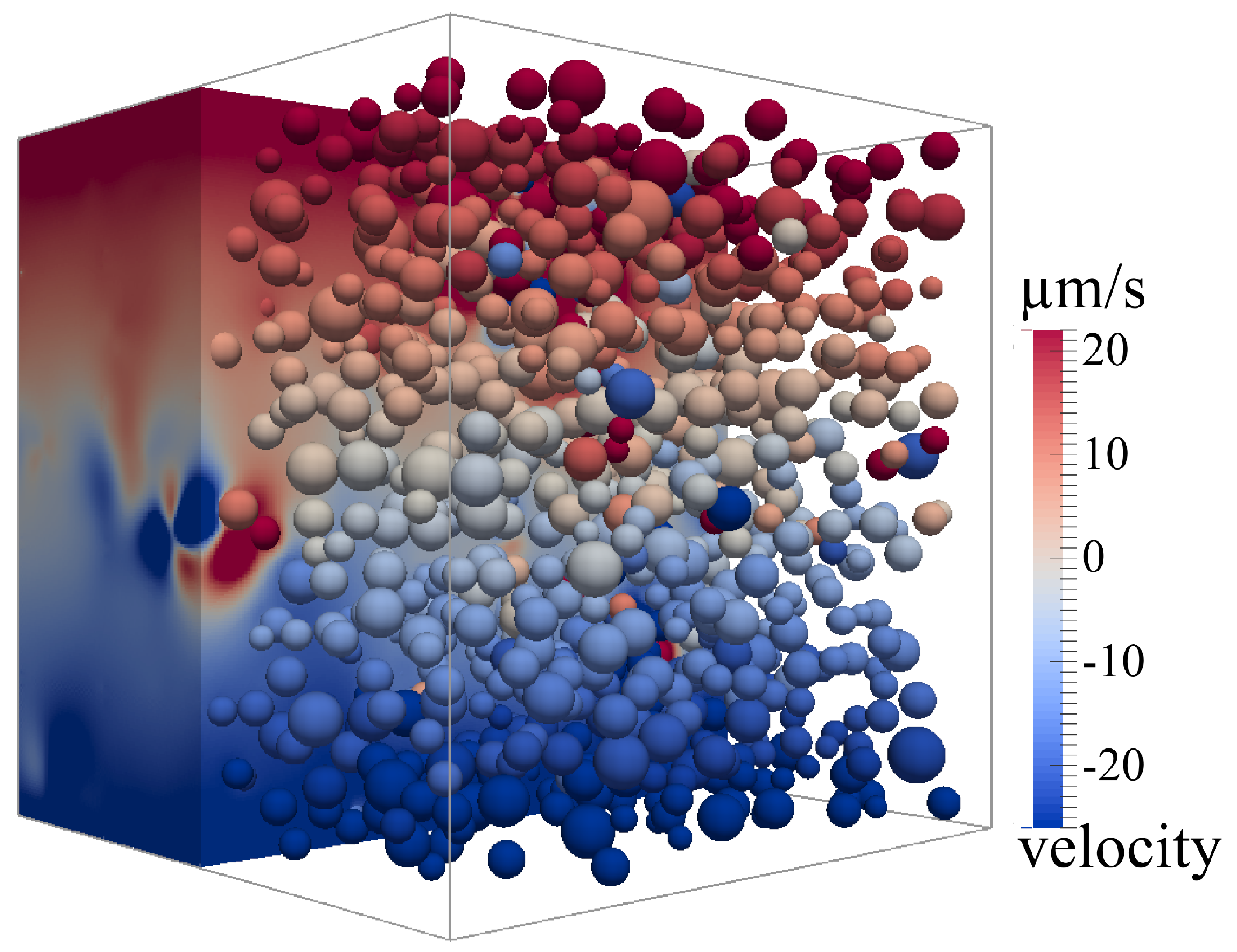
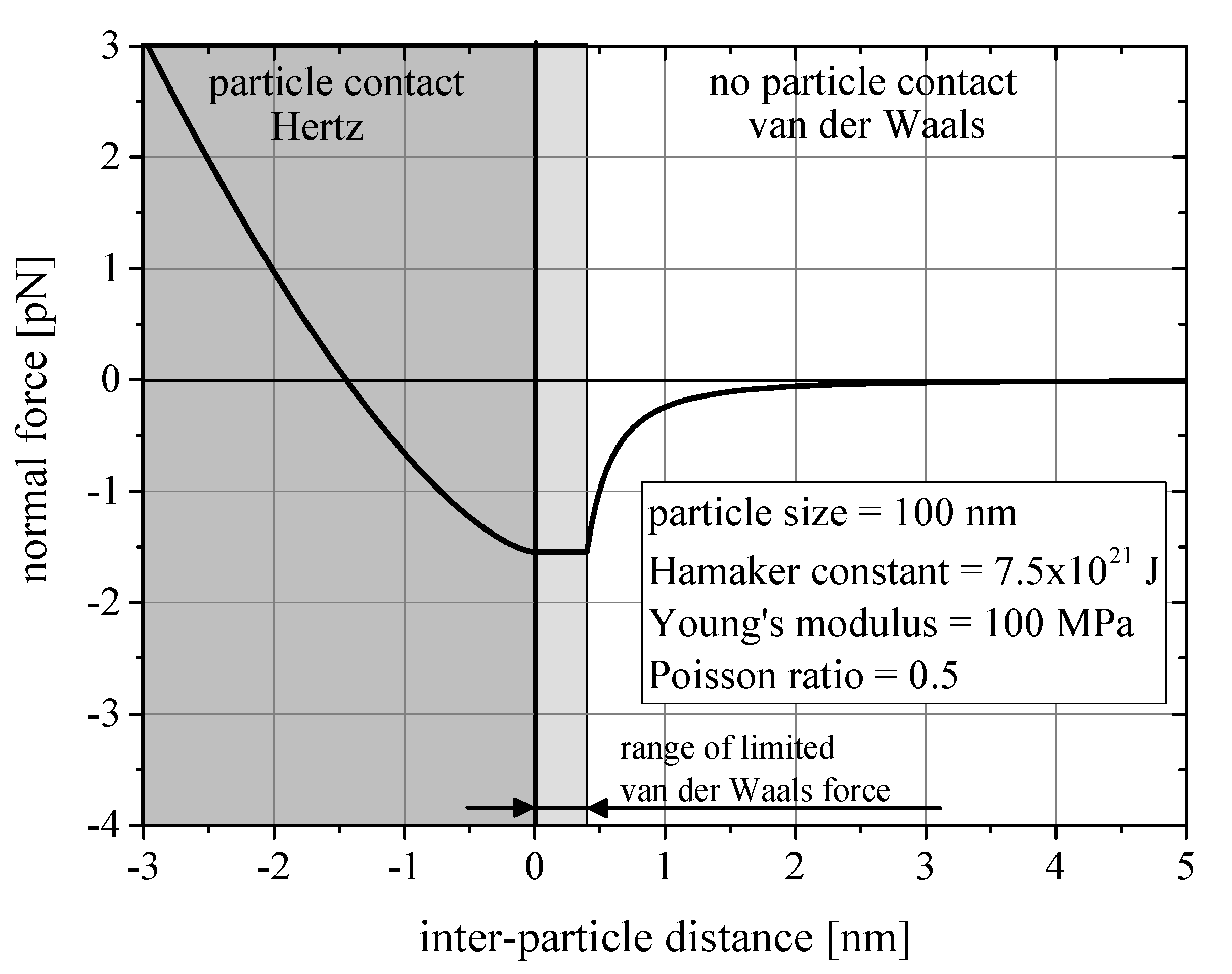
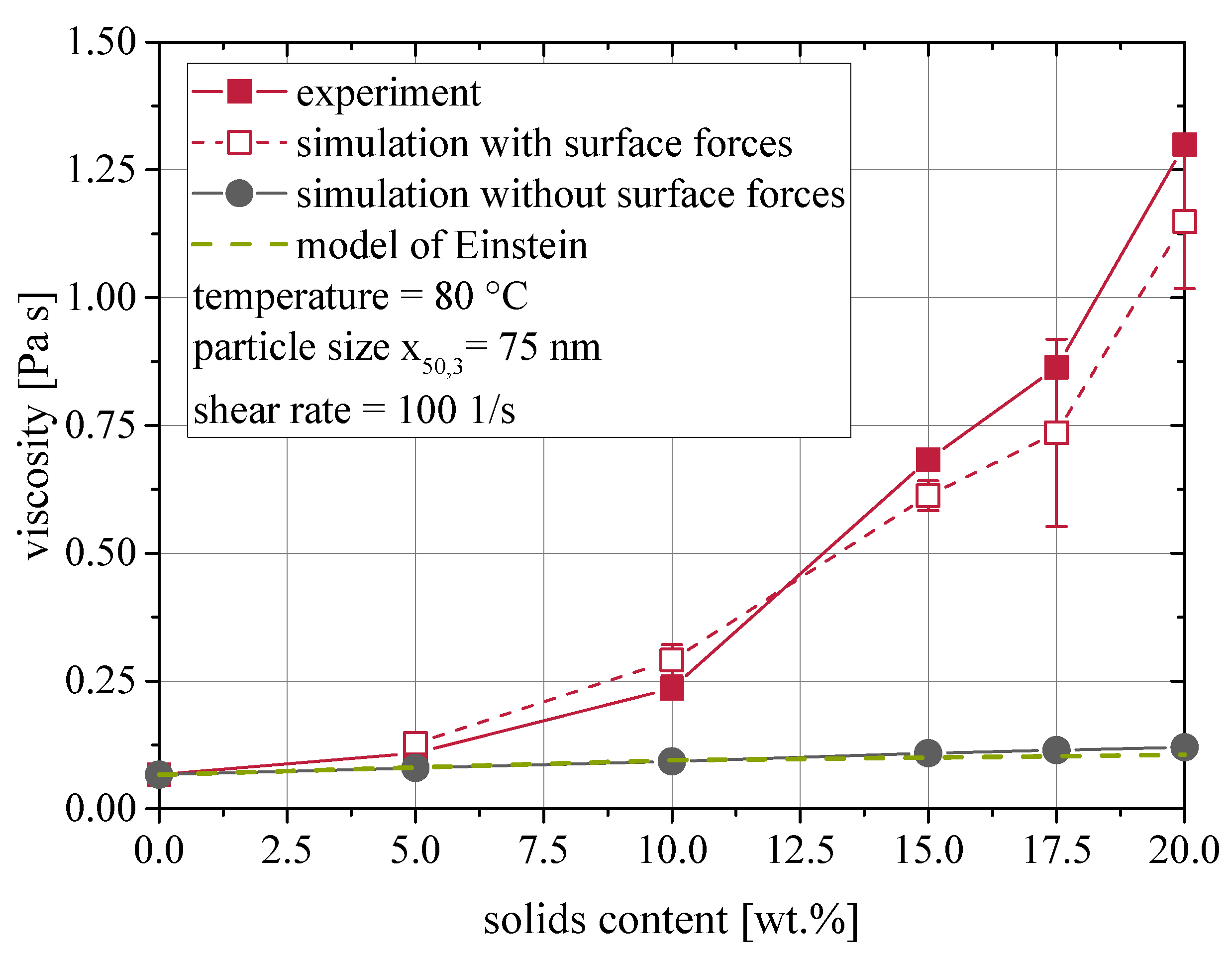
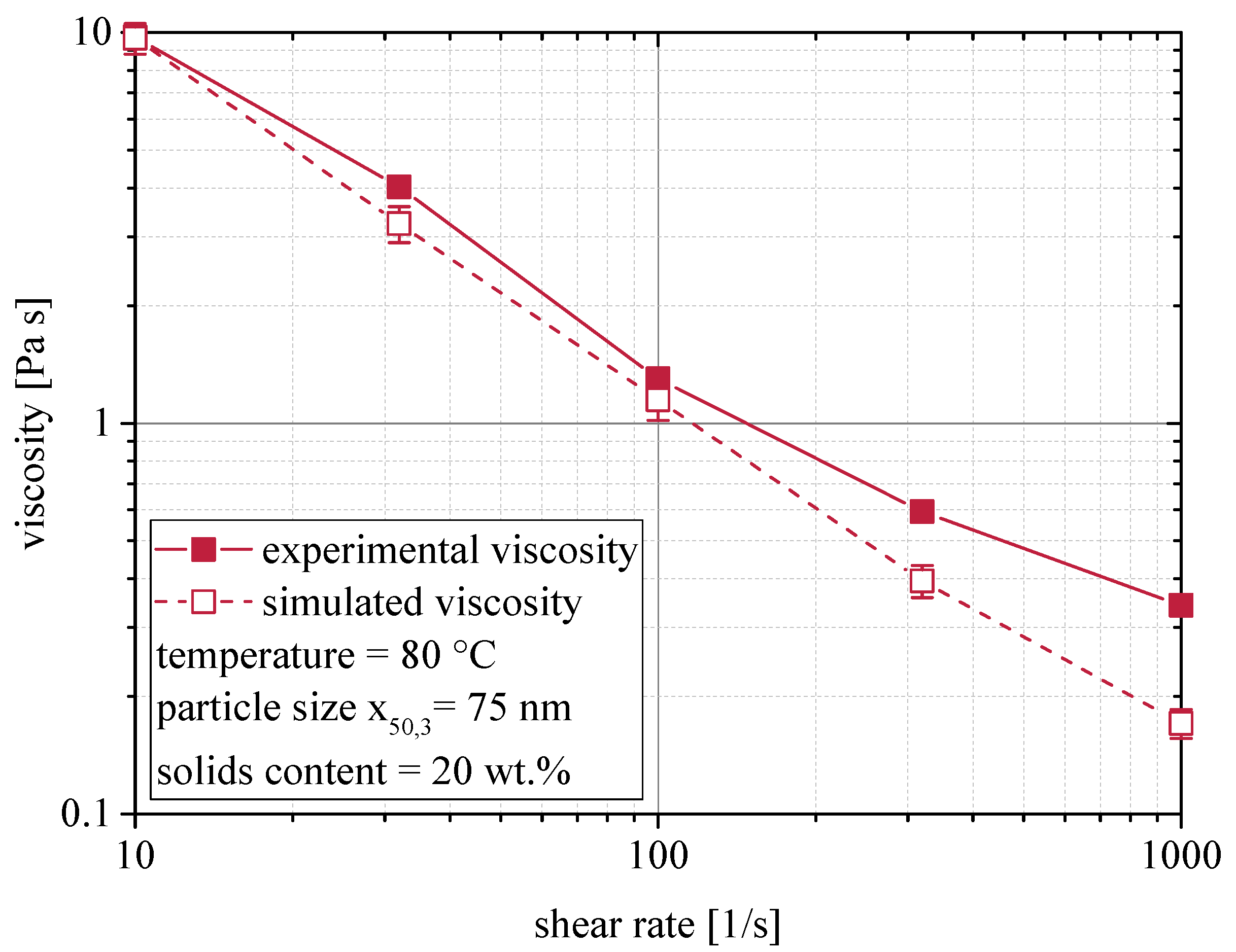

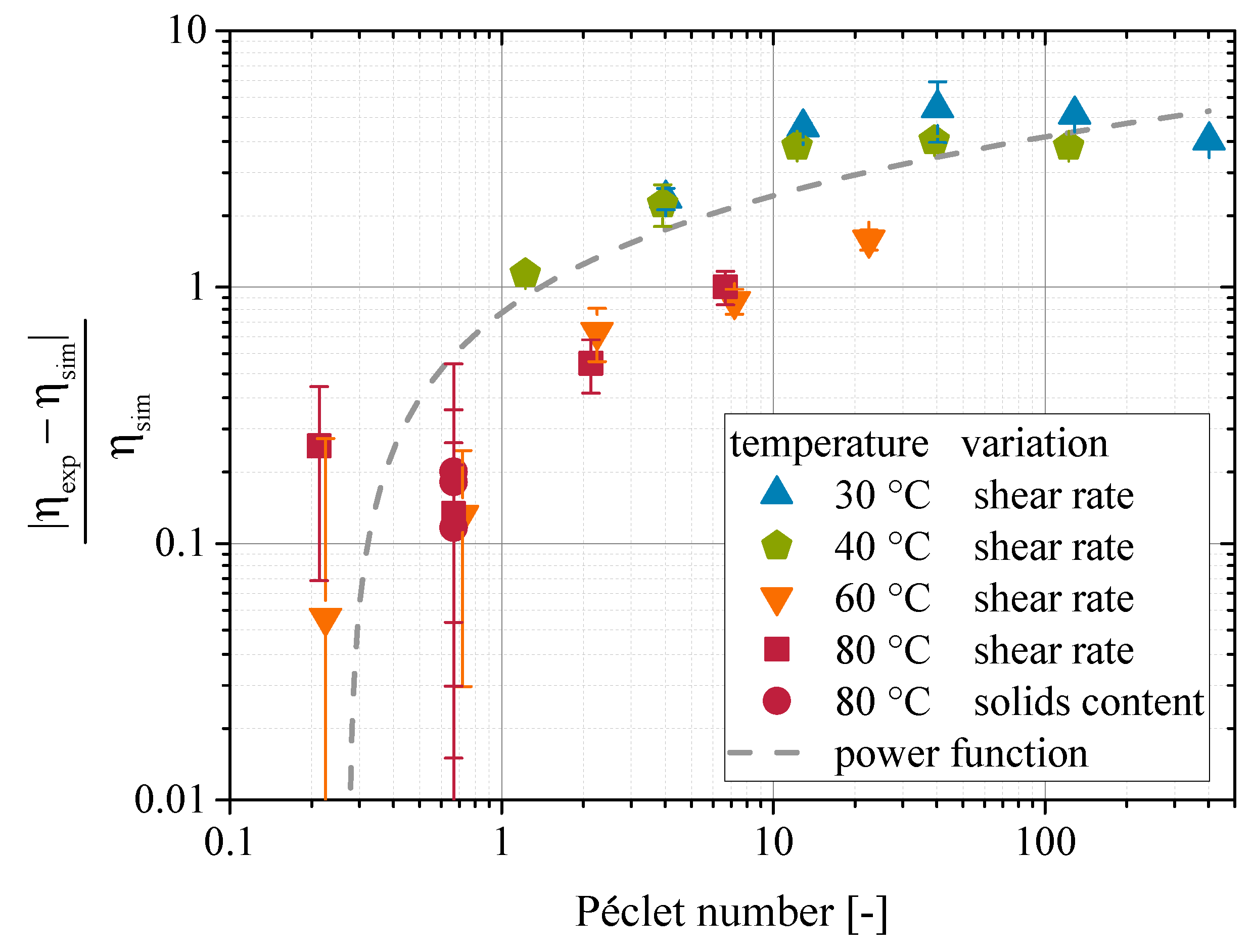
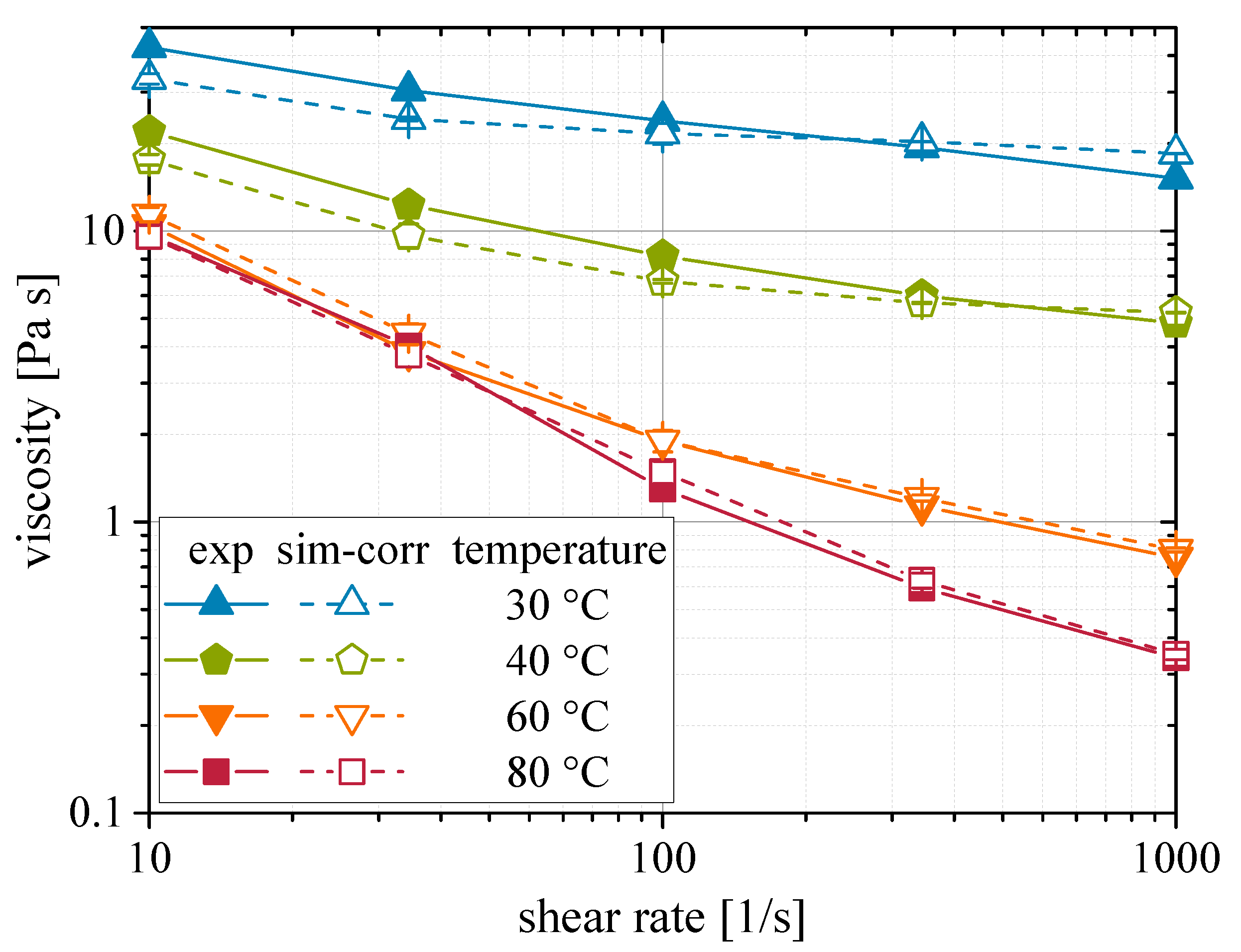
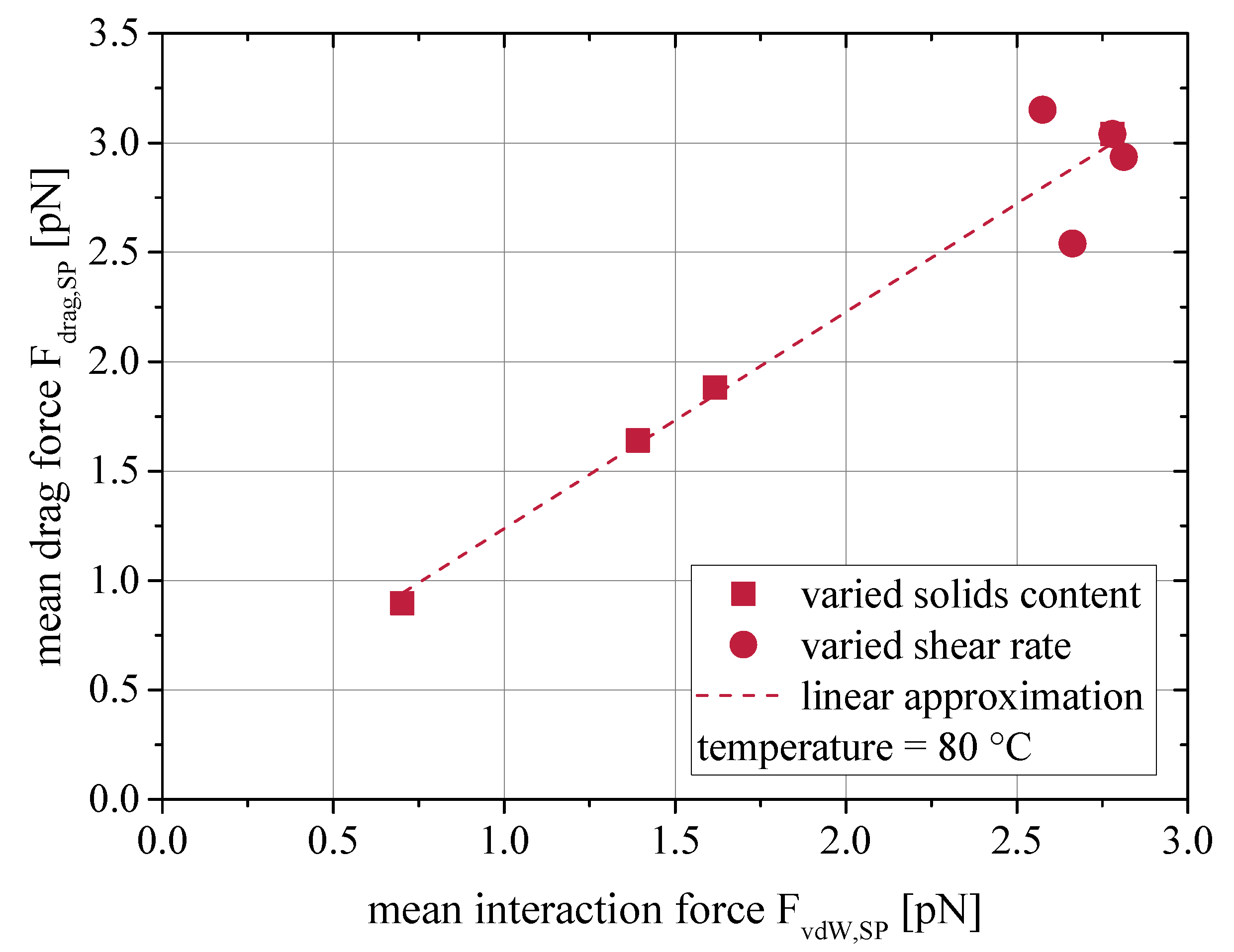

© 2020 by the authors. Licensee MDPI, Basel, Switzerland. This article is an open access article distributed under the terms and conditions of the Creative Commons Attribution (CC BY) license (http://creativecommons.org/licenses/by/4.0/).
Share and Cite
Finke, B.; Kwade, A.; Schilde, C. Numerical Simulation of the Rheological Behavior of Nanoparticulate Suspensions. Materials 2020, 13, 4288. https://doi.org/10.3390/ma13194288
Finke B, Kwade A, Schilde C. Numerical Simulation of the Rheological Behavior of Nanoparticulate Suspensions. Materials. 2020; 13(19):4288. https://doi.org/10.3390/ma13194288
Chicago/Turabian StyleFinke, Benedikt, Arno Kwade, and Carsten Schilde. 2020. "Numerical Simulation of the Rheological Behavior of Nanoparticulate Suspensions" Materials 13, no. 19: 4288. https://doi.org/10.3390/ma13194288
APA StyleFinke, B., Kwade, A., & Schilde, C. (2020). Numerical Simulation of the Rheological Behavior of Nanoparticulate Suspensions. Materials, 13(19), 4288. https://doi.org/10.3390/ma13194288







